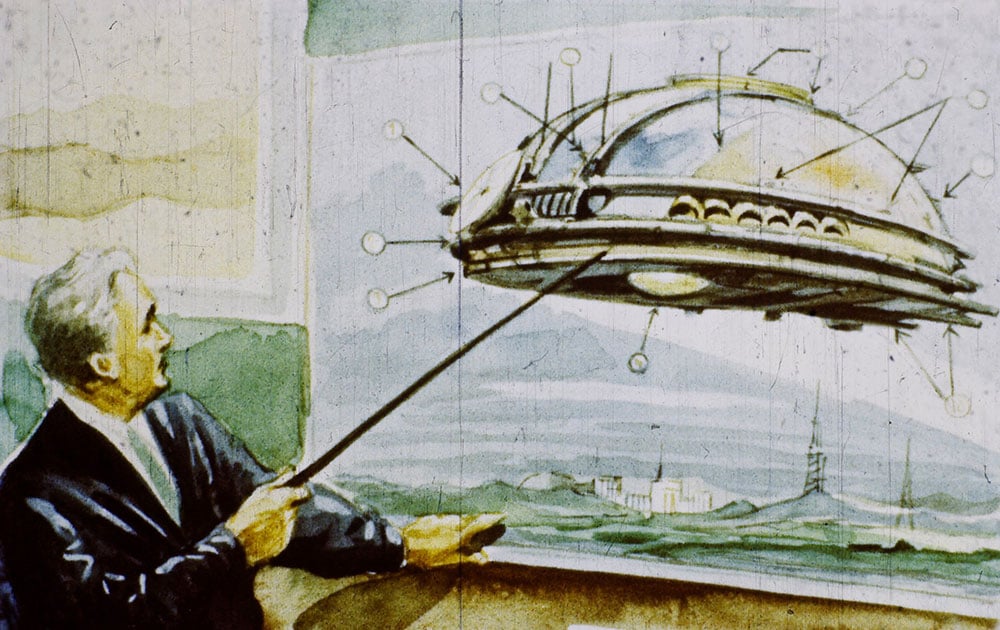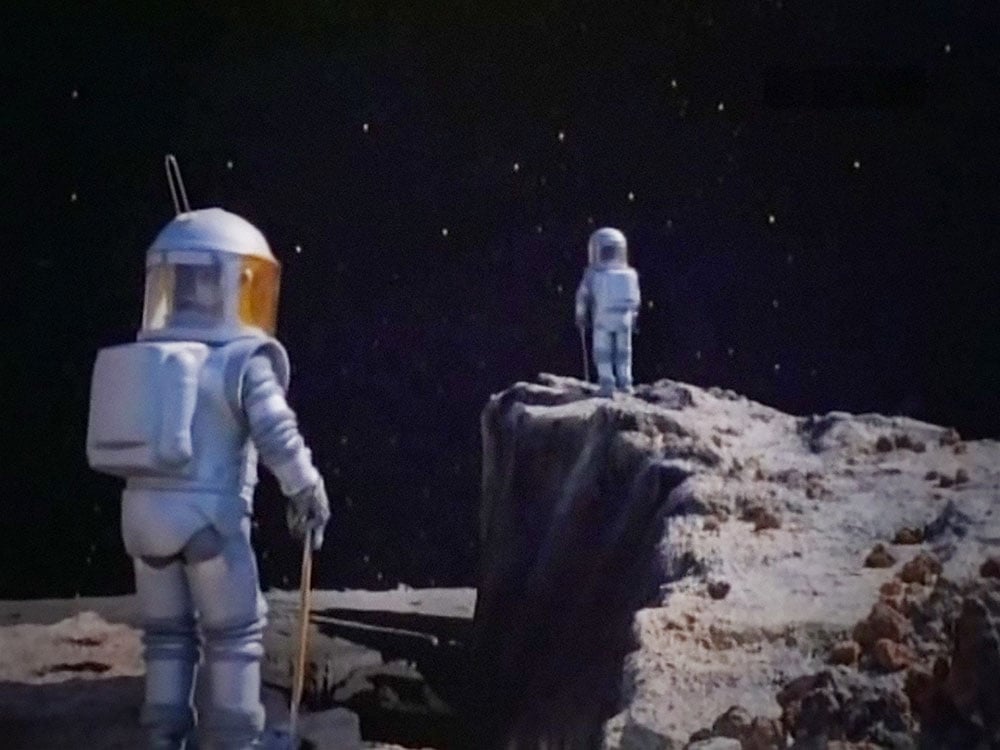Sixties Soviet predictions for 2017: which actually came true?

Last week a Russian cartoon from the 1960s predicting life in 2017 resurfaced online. So how prophetic were the Soviets and is there cause for optimism for the year ahead?
In The Year 2017 is a Soviet comic strip that imagines the world – and the USSR – in 2017. Originally released by the Diafilm studio in 1960 in the form of a “filmstrip” – a kind of slideshow that could be viewed on a special projector, popular before the advent of VCRs – the cartoon re-emerged this week as it was published on social media and went viral. It gets some things impressively right, and some hilariously wrong. So which of these Soviet predictions came true? Which didn’t? Can we look back on prophecies from the sixties in search of hope for 2017, after the universally accepted disaster that was 2016? Read on for the ultimate trip back to the future.
Skype: ✔️

The Soviets were clearly privy to many things, among which was the invention of Skype (or the “televideophone”). The device looks like an old-school TV set that requires its own cupboard – but the definition is probably still better than on your tiny AirBook. The actual phones, however, still have cords, so don’t expect a mobile version to come out any time soon.
Taming the forces of nature: ✖️

A dam over the Bering Strait, cutting off Arctic currents from the Far East. The flow of the largest Siberian rivers reversed. Drilling machines extracting energy from the depths of volcanoes. Flying meteorological stations controlling the weather. None of that has happened, of course. Still, the ambition on display – to have humans quite literally managing the planet – is impressive.
Climate change: ✔️

It goes without saying that giant tornadoes off the coast of the Black Sea don’t just appear out of nowhere, so did the Soviets predict climate change? Not quite: in the filmstrip the storms are caused by the last surviving Western imperialists accidentally blowing themselves up on a remote island in the Pacific, having failed to get their heads around new technology (which the Soviets have obviously already mastered). In any case, climate change deniers beware: you would have been wrong even in this fictional, 1960s version of 2017.
Smart domestic gadgets: ✔️

Need to stop tapping the snooze button on your phone? Maybe it’s time to invest in this genius Soviet invention – a smart alarm clock with a mechanical arm that flicks you on your nose to wake you up. If the pain of the flicks doesn’t work, you’re sure to be woken up by the sheer creepiness of a retractable plastic arm hovering above you as you fail to catch a lie in.
Print media is alive and well: ✖️

In the filmstrip people get their breaking news from the crisp pages of fresh newspapers. In reality the smell of printing press ink is fading away, and we are left wondering why hardly any sci-fi predictions of yore managed to predict the internet.
Scanning technology: ✔️

In this Soviet version of 2017, scanners are widely available in good socialist households. In the filmstrip future, scanners are incorporated into a nifty piece of smart kitchen technology: all you need to do to get a meal is write down your preferences on a piece of paper and drop it in a machine. It will scan your handwriting and cook you the meal you requested. A good reason to practice your handwriting in 2017, and maybe a way of kicking your Uber Eats addiction.
The USSR still exists: ✖️

Of course, the biggest miscalculation made by the filmstrip is in fact an implicit one: that come 2017 the USSR would still be a country. In actual, non-sci-fi reality we have just passed the 25th anniversary of its dissolution. From this perspective the lack of iPads or even cordless phones seems less troubling. Maybe the lesson for those looking to make even short-term predictions about the future is always to consider the bigger picture. And while we might not have smart kitchens yet, at least we have access to the internet.

